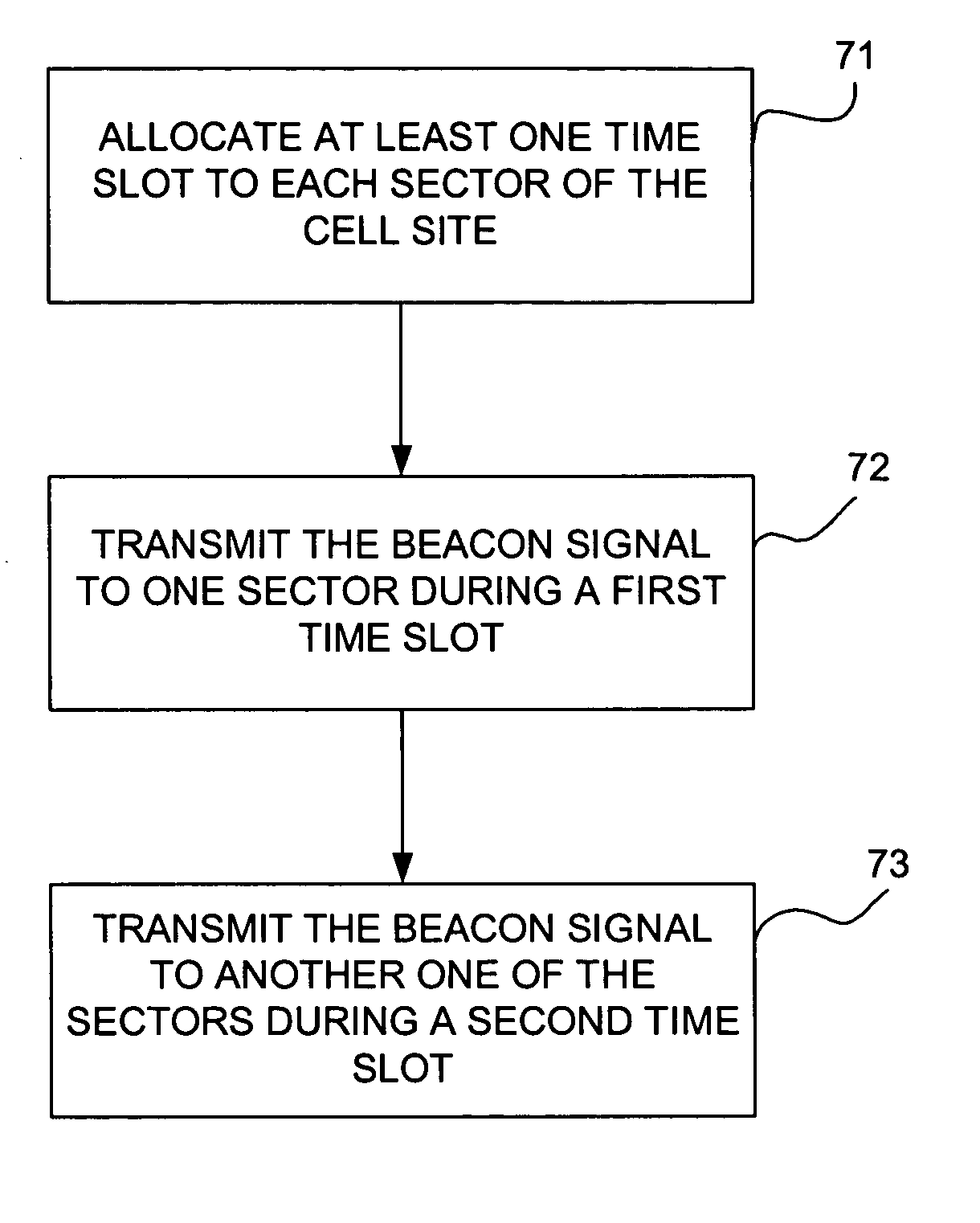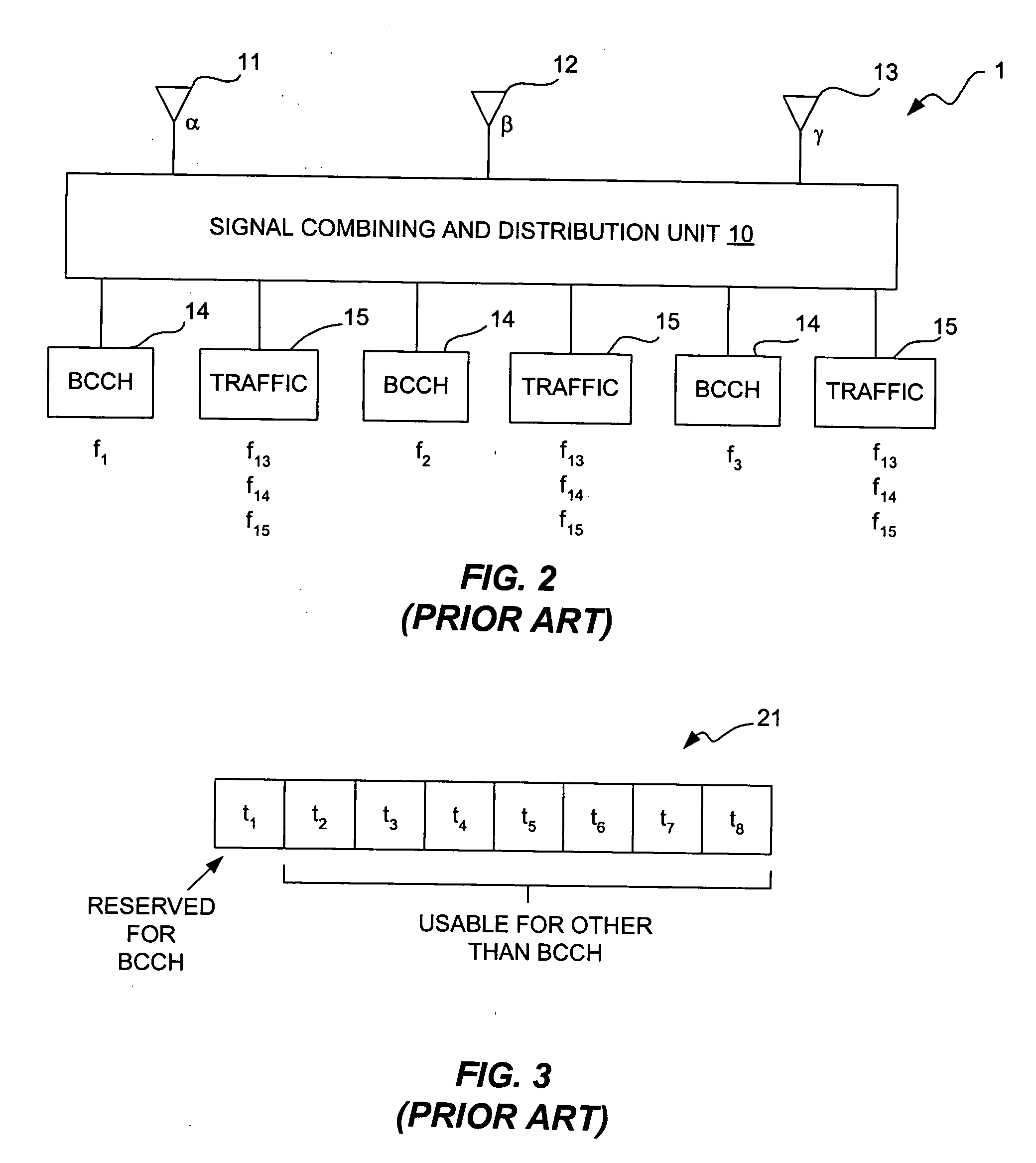Method and apparatus for allocating a beacon signal in a wireless communications network
a wireless communication network and beacon technology, applied in the field of communication networks, can solve the problems of reducing the number of frequencies that can be used for caller traffic, reducing the number of co-channel interference, so as to improve spectral efficiency, improve spectral efficiency, and reduce adjacent channel interference and co-channel interference.
- Summary
- Abstract
- Description
- Claims
- Application Information
AI Technical Summary
Benefits of technology
Problems solved by technology
Method used
Image
Examples
Embodiment Construction
[0036] In accordance with the preferred embodiment of the present invention, a single frequency is allocated for the beacon signal for each cell site. FIG. 4 is a diagram of a plurality of cell sites, each of which is divided into three sectors, α, β and γ, with all of the sectors of a given cell site using the same frequency for the beacon signal for that site. This diagram represents an example of the manner in which frequencies can be allocated in accordance with the method of the invention. The beacon signal allocation configuration represented by the diagram shown in FIG. 4 is a 1 / 3 beacon signal frequency allocation scheme, where X=1 corresponds to the number of cell sites that use a given frequency for the beacon signal and Y=3 corresponds to the total number of frequencies used for the beacon signals for the network.
[0037] It should be noted that the invention is not limited to the 1 / 3 beacon signal frequency allocation scheme shown in FIG. 3. Other allocation schemes may b...
PUM
 Login to View More
Login to View More Abstract
Description
Claims
Application Information
 Login to View More
Login to View More - R&D
- Intellectual Property
- Life Sciences
- Materials
- Tech Scout
- Unparalleled Data Quality
- Higher Quality Content
- 60% Fewer Hallucinations
Browse by: Latest US Patents, China's latest patents, Technical Efficacy Thesaurus, Application Domain, Technology Topic, Popular Technical Reports.
© 2025 PatSnap. All rights reserved.Legal|Privacy policy|Modern Slavery Act Transparency Statement|Sitemap|About US| Contact US: help@patsnap.com



